Need to reform the norms and rules of operations, lest face impending anarchy
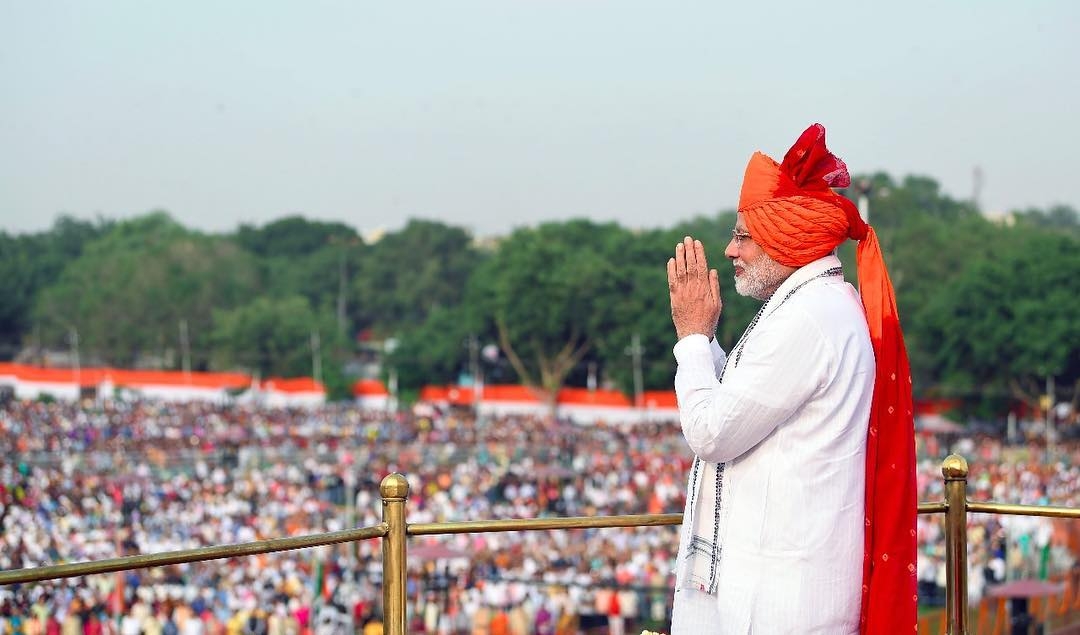
Planning in perspective:
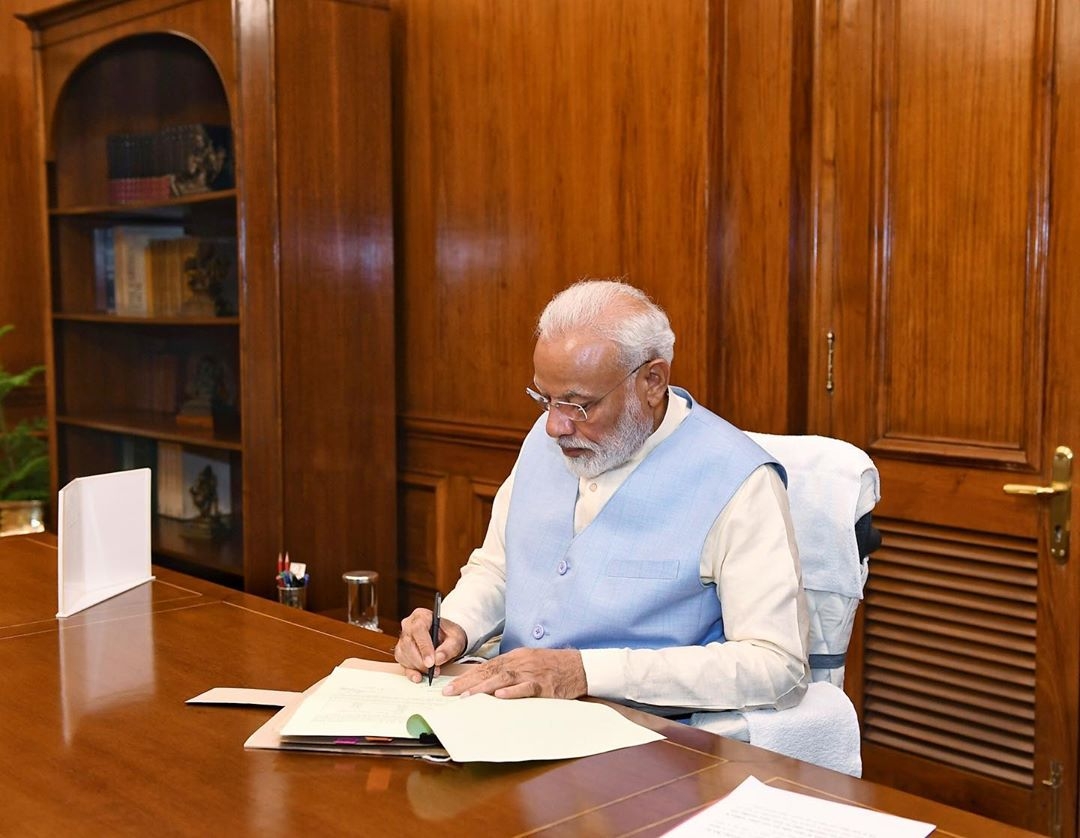
The biggest challenge before the ‘second-Term Modi Government’ was a total relook at and an overhaul of the entire bureaucratic system in the governance of the State which was pivotal to the development process. Following few are the steps initiated by the new Government which were necessitated to infuse enthusiasm in the several echelons of the administration. The Prime Minister is reported to have made quite clear in a joint meeting of the top Secretaries of all the Ministries and Departments under the Government of India that these should seriously take a note that “Bharatiya Janata Party Government” is going to stay for quite some time to come , and therefore should take their duties and responsibilities seriously”. In other words, the top bureaucracy need not treat the policy-making function as a temporary passing phase. Their all-out involvement in the process of policy making and its execution is required to be seen and done honestly.
Modi and along with him his new team embarked upon a tough task of making a bit unpopular policy decisions and harsh executing plans which was an uphill task. The following quotes would throw light on various references made by different quarters as to how seriously be the new government engaged in planning several schemes for a better tomorrow.
“The Prime Minister’s Office (PMO) had asked all the government departments to submit their action plans for first 100 days and for the full five years with clearly defined measurable outcomes by mid-June.
Self confidence of exuberant Narendra Modi:
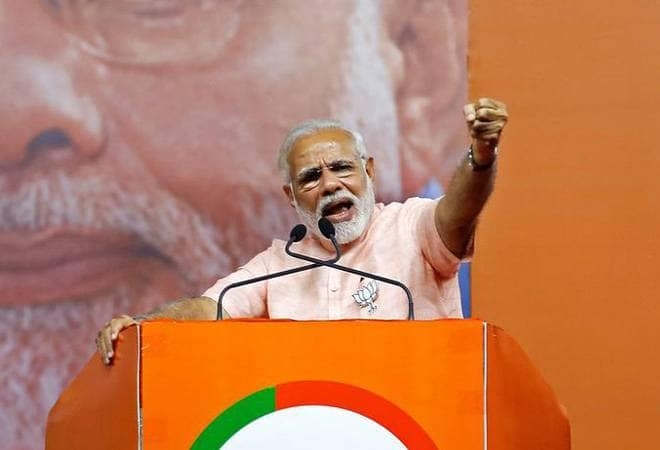
Modi had full faith in the voters in the country. His whirlwind nation-wide campaigning across the country not only exhibited his physical fitness and the stamina, but it also exhibited the confidence he had in the voters about his electoral success. The following citations would indicate how the press and the civil servants around him treated his leadership and expected progressive steps. He had scripted his priorities. Government and media sources spelt as to how the ground preparations were being designed. The following reports would make the picture clearer. ( Quotes ).
“According to three top officials in the Modi government, in the midst of hectic election campaigning, the PM had asked his office, the Vice Chairman of the Niti Aayog and the Principal Scientific Adviser (PSA) Prof K Vijayraghavan to chalk out an agenda on the scale of Swatch Bharat with sweeping economic and bureaucratic reforms.
“While the entire country had focused on Lok Sabha elections, the PMO, Niti Aayog and the PSA's office were locked in meetings through weekends to build the agenda which would have a connect with the public for larger good , like from waste to wealth mission and enhanced health care benefits in rural areas.
“The 100 days plan focuses on high growth sectors, learning outcome sectors and job creation sectors. High growth sectors include mining, coal, power and energy. Learning outcome sectors are education and primary health centers. Job creation sectors include tourism and MSME.
“Drinking water and interlinking of rivers will be one of the topmost priorities if PM Modi is voted back to power, the officials added. The basic idea is to build a network of dams and linkages so that India is not exposed to threat of China building dams on upstream Brahmaputra as well as optimum utilization of the rivers under India in the Indus Water Treaty.”
The noting further stated : "Prime Minister Modi is aware that the only way to deliver water to South India particularly Tamil Nadu is by interlinking of rivers and ensuring that rivers are not just allowed to flow into sea during monsoon season by building upstream storage areas," said the first official.
“The other priority areas are roads, airports and ports infrastructure to promote tourism all over the country. "The plan is already ready for showcasing India's vast historical heritage by creating a network of hotels along with airports so that the international tourist has better access to these sites," said a senior Niti Aayog official who asked not to be named”.
The ruling party has realized the importance and urgency of the new programmes being drawn and implemented and therefore , it wasted no time in ceremonial felicitations and got down to the business of governance. This can be evidenced from the small initial meetings conducted by the concerned which discussed the development ideas.
Narendra Modi : The visionary nation builder :
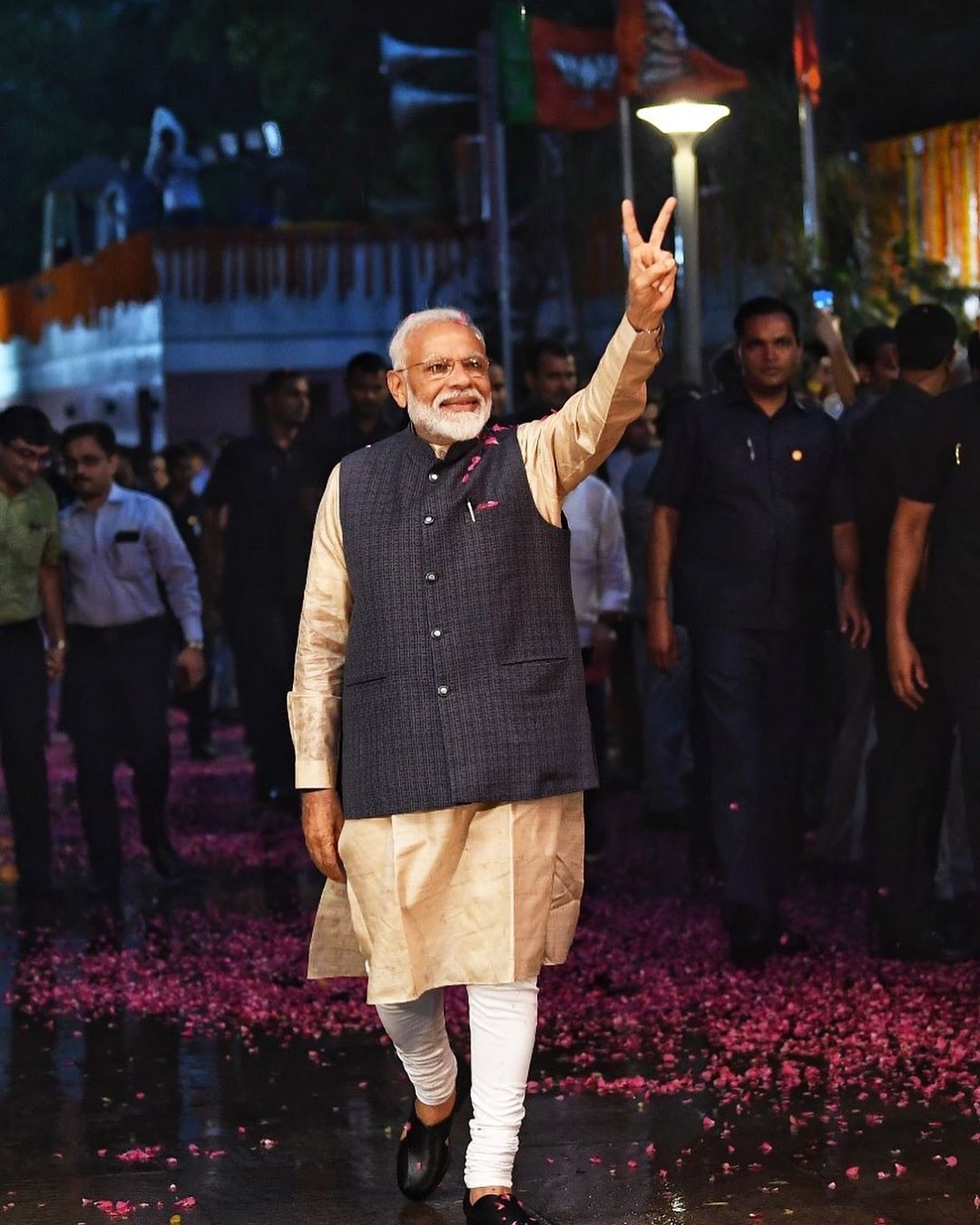
Several reports in the media centers continued to pour in. It revealed that the NITI aayog was leading from the front as following.( Quotes ).
“In the first 100 days of Indian Prime Minister Narendra Modi’s second term, a slew of ‘big-bang’ economic reforms that should please foreign investors are likely to be pursued, according to a top official at the government’s main think tank. The reforms will include changes in labour laws, privatization moves, and creation of land banks for new industrial development, said Rajiv Kumar, vice chairman of NITI Aayog who reports directly to Modi. “They (foreign investors) will have reasons to be happy. You will see a slew of reforms I can assure you of that. We are going to pretty much hit the ground running,” Kumar told Reuters in an interview.
“Kumar said reforms in India’s complicated labour laws will see the light of day as early as the next parliamentary session in July, when the government will place a new bill before the lower house for approval. It will aim to combine 44 central laws into four codes – wages, industrial relations, social security and welfare, and the fourth – occupational safety, health and working conditions.
“This should help companies avoid getting embroiled in a series of complicated disputes with their workers and officials that involve regulations set by authorities at different levels of government and can lead to long, drawn-out adjudication in various parts of the legal system. The government could also offer swathes of land to foreign investors from the land banks it plans to create from unutilized land controlled by public sector enterprises, Kumar said.
“What could be attempted is to build an inventory of government land that can then be offered to foreign investors,” Kumar said. The land parcels could be designed as clusters catering to a specific set of investors or industrial sectors, Kumar said. Getting access to some of the large amounts of unutilized Indian government land would reduce major risks for foreign companies as there would be a lot less risk of legal challenges over ownership and development. A lot of the sites they have used in the past was previously farm land, opening them up to protests and court action by local communities over land rights, the environment and other issues.
“Kumar said the government will focus on fully privatizing or closing more than 42 state-controlled companies in the coming months. The government is even mulling lifting the foreign direct investment cap on Air India, the loss-making state-owned flagship carrier, to make it easier to sell. Kumar also said that it could create an autonomous holding company that would control all state-owned firms and wouldn’t be answerable to lots of different ministries. This would speed up decision making for asset sales, avoiding much of the central government’s bureaucracy.
“He suggested the government should start with reforming the state-owned banking sector and also create more money for spending on infrastructure and new public housing through more and quicker privatizations and better tax collection. “We should (start with the banks).. There will be big bang, there will be 100 days action. We are all geared for that … I have maintained that the fiscal policy should be counter cyclical. There is scope for that.”
Initiative by the NITI Aayog :
The most acclaimed news portal News Bharati.com ( Nagpur ) welcomed the meeting of the NITI held on 15th June 2019 in the following words : ( Quotes ).
“Employment is connected to growth and that it can’t be discussed separately. The Centre is taking several steps to increase the growth rate in the time to come”, said NITI Aayog Vice Chairman Rajiv Kumar addressing a forum ahead of the governing council meeting on 15th “Employment as a developmental model has always remained a core to focus by the Centre. India's rate of unemployment doubled in the past two years to 7.6 per cent between May 2017-April 2019. In this light ahead, Kumar added that the team was making best efforts to reverse the situation, creating more and more job opportunities”.
Narendra Modi immediately after General Elections to the Union Legislature sat down and undertook the huge task of preparing a future design for overhauling the entire national administrative system and reformed the policy making channel keeping the poorest citizen in view. He firmly believed in the Pt.Deendayal Upadhyay’s “antyodaya” concept . He was sowing the idea of a ‘new India’ in the hearts of the media, the political parties, the civil service, the youth, and every body . His conviction in the making of a new India has reinforced his resolve to work tirelessly . His conviction has goaded several others to join him in his long march towards a glorious India of tomorrow.
Announcing a programme for a New India:
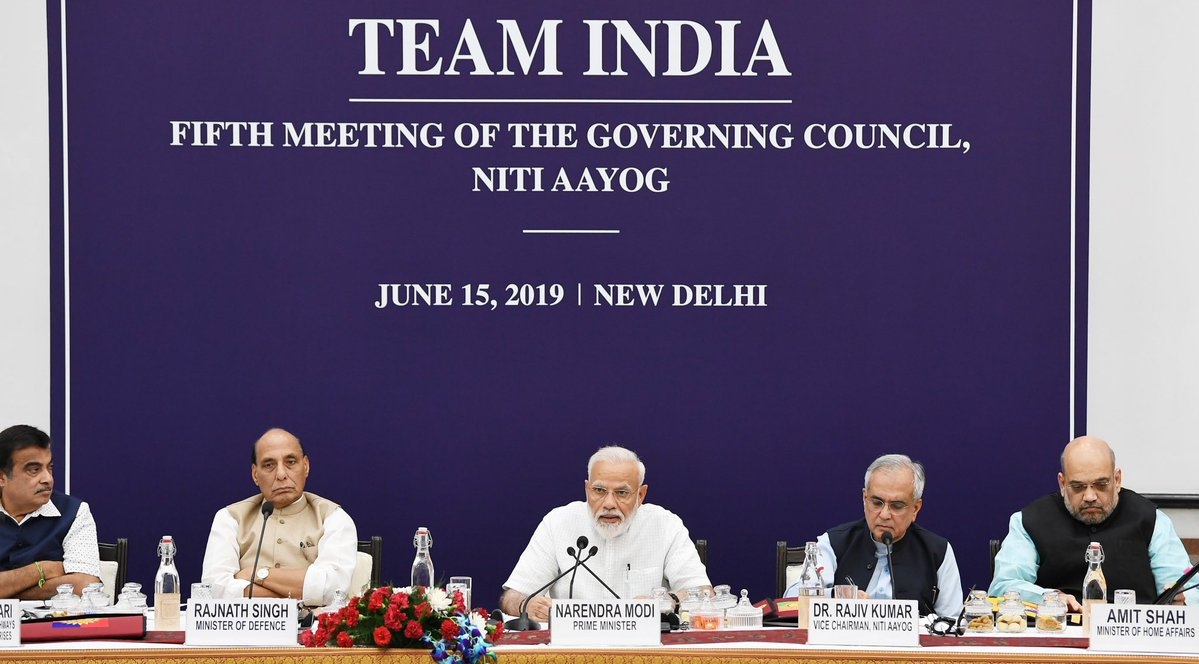
Following is the address to the NITI Aayog’s fifth meeting of the Governing Council of NITI Aayog, held at Rashtrapati Bhawan, on 15th June 2019. Quote.
"everyone at this platform has a common goal of achieving a New India by 2022. He described Swachh Bharat Abhiyan and PM Awaas Yojana as illustrations of what the Centre and the States can accomplish together".
“Modi said, empowerment, and ease of living, have to be provided to each and every Indian. He said the goals that have been set for the 150th anniversary of Mahatma Gandhi, should be accomplished by October 2nd, and work should begin in earnest towards the goals for 2022, the 75th anniversary of independence.
“Narendra Modi announced that the goal to make India a 5 trillion dollar economy by 2024, is challenging, but can surely be achieved. He said States should recognize their core competence, and work towards raising GDP targets right from the district level.
“Noting that the export sector is an important element in the progress of developing countries, he said both the Centre and the States should work towards growth in exports, in order to raise per capita incomes.
“He said there is immense untapped export potential in several States, including the North Eastern States. He said a thrust on export promotion at the State level will provide a boost to both income and employment.
“Describing water as an important element for life, the Prime Minister said that the poor bear the brunt of insufficient water conservation efforts. He said that the newly created Jal Shakti Ministry will help provide an integrated approach to water.
“He urged States to also integrate their efforts towards water conservation and management. He said management of available water resources is a vital imperative. He said that the aim is to provide piped water to every rural home by 2024. He said attention has to be given to water conservation and raising the water table.
He appreciated the efforts made by several States towards water conservation and management. Rules and regulations, such as model building bye-laws, also need to be framed for water conservation and management.
“The Prime Minister called for effective steps to tackle drought. He said that the spirit of per-drop, more-crop needs to be promoted.
“Reiterating the Union Government's commitment to double incomes of farmers by 2022, he said this requires to focus on fisheries, animal husbandry, horticulture, fruits, and vegetables.
“He said, "the benefits of PM-KISAN – Kisan Samman Nidhi - and other farmer-centric schemes should reach the intended beneficiaries well within time, noting that there is a need for structural reform in agriculture".
“He spoke of the need to boost corporate investment, strengthen logistics, and provide ample market support. He said the food processing sector should grow at a faster pace than food grain production.
“Turning to aspirational districts, Modi said that the focus should be on good governance. He said the improvement in governance has led to remarkable progress in several aspirational districts. Giving several examples, he said out-of-the-box ideas, and innovative service delivery efforts in some of these districts have also delivered outstanding results.
“He said that many aspirational districts are affected by Naxal violence. He said the battle against Naxal violence is now in a decisive phase. He said violence will be dealt with firmly, even as development proceeds in a fast-paced and balanced manner.
“On the health sector, the PM Modi said that several targets have to keep in mind, to be achieved by 2022. He also mentioned the target of eliminating TB by 2025.
“ He urged those States who have not implemented PMJAY under Ayushman Bharat, so far, to come onboard this scheme at the earliest. He said health and wellness should be the focal point of every decision.
“He stated that we are now moving towards a governance system characterized by Performance, Transparency, and Delivery. He said proper implementation of schemes and decisions is vital.
“He called upon all members of the Governing Council of NITI Aayog to help create a government setup which works and has the trust of the people.”
( Source : Excerpts drawn from News Bharati.com )
The ditto copied narration presented here is with a purpose. The content therein emphatically suggests that the ruling party is very serious about the development of the common man in the street. The ruling party exists with a noble purpose. Its aim is to think and act for the benefit of the society and the nation. The opposition political parties unfortunately have a single political programme and it is “oppose Modi and do not allow him to discharge his function” at any cost. The substance of the content narrated shows the urgency and significance of challenges posed before the nation necessitate the party in power to immediately sit down to tackle these problems and solve these with an assurance to solve.
“The lengthy details are narrated for the students of the Indian polity in order to invite their attention to differentiate the behavioral pattern of the ruling party and that of the opposition. The leader of the ruling party set up an excellent example of maturity, sobriety and patience in public life. Modi set up an example of how a leader should be above emotional rings –he chose to travel to the holy place of Kedarnath for meditation for a couple of days, immediately after the elections were over. This was a step he took only to emit a signal that ‘politics and elections’ were not the ultimate goal in our life. One need not drift away from it, but he need not make it an ultimate goal.
Narendra Modi -Towering leap forward:
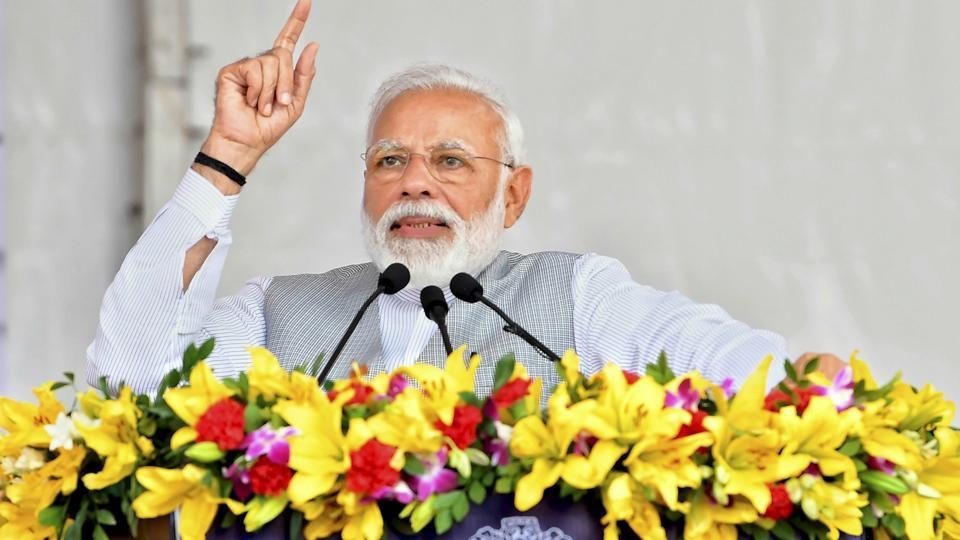
The electoral battles are over. The warring factions within and outside party forums have been silenced as these have been trounced by the BJP and that these later realized their comprehensive drubbing at the hands of the winning ‘goal-keeper’. The tragedy of the Indian parliamentary democracy is that the losing party miserably fails to accept its defeat. These cannot even think of its being ousted from the governance.
Following are the glaring ‘enemies-in- groups’ which are discretely advancing to destroy the parliamentary democratic fabric and the foundation. Refer to the statement issued by the INC President Rahul Gandhi that ‘52 is a number enough to harass the ruling party’. Did he mean that with a solid number of 52, these can alone disrupt the smooth proceedings of the House. The defeated leaders will continue to speak in the name of the people who have rejected them. The tragedy is that these defeated and rejected leaders will continue to disrupt the political peace and keep on swearing shamelessly in the name of the ‘dream mandate’ which they have not earned. These arrogant groups disrespect the popularly elected representatives and their mandate which they have earned as majority democratic verdict. The INC President seems to have suggested that their tiny minority would not allow the Executive to discharge their legitimate functions. The situation demands that the rules of House proceedings be strictly followed to allow the Executive function at its own way. The toughest path which had been announced by Narendra Modi requires a long play trial, patience and continuity. Any break in its midst would push back the chain of entire efforts.
The precautionary remedial exercise:
In view of the above possibilities, the Indian parliamentary democracy must consider a few regulating steps as following in order to protect the Indian parliamentary democracy:
( a) Regulating the weak political parties esp. those which have lost the electoral battles , ( b ) the media which functions more as a news maker rather than news provider ( their definition of news is, ‘news is propaganda in favour of some and against some others’) , instigating the people ( c ) disruption of the House proceedings for several weeks together for no valid reason by the disgruntled elements esp the opposition parties who are miserably the losers, ( d ) the quality of the propaganda carried out during the electoral proceedings ,( e ) the quality of the material and the content of the criticism , i.e. the war of words, circulated in the speeches and the publications brought out by those involved in the battles, ( f ) prohibition of personal attacks on the national level leaders,( g ) unfettered and exaggerated concepts of freedom of speech and liberty , ( h ) misconception of ‘human rights ‘and its administration , ( I ) Increasing arrogance and ignorance of the media units. (J) Action plan for immediate future. ( k ) Revitalization of enlightened bureaucracy to be engaged in benevolent public administration with the mantra of “nation first”,( l )statutory restrictions on the agitational activities of the opposition parties, ( m ) constitutional right of the ruling party to govern ( n ) legislating regulations upholding the sanctity and sovereignty of the State and the voters.
It has become necessary to consider tough measures to be deployed as correctional measures to enlighten the ‘opposition’ and bring about a positive and constructive approach in it. It has become imperative to redefine, reinterpret and represent several situations which have been either misinterpreted or deliberately presented with a twist. All these instances emanate from cynicism and hypocrisy.
The above mentioned matters are serious in itself and at times will take very little time to flare-up and destroy the parliamentary ethos. Care needs to be taken in its initial bid.
It has now become imperative to define and redefine the scope of some activities in the public domain. The elected Executive needs a strong assurance of smooth sailing. It has become necessary to restrict the scope of the ‘critical’ rallies against the ruling party which are unnecessarily organized targeting the Prime Minister i.e. Narendra Modi. A legislation restricting the frequency of these activities is required to be on the card.
The above contention is not out of disrespect for and disbelief in the civil society with its vast expanse, on the contrary, the present author is a staunch advocate of a civil society and its prerogatives in our civilization. All that the author is trying to point out is, at times one does require self-discipline, self-regulation and shelving the dear rights and liberties temporarily, keeping in view a long term project.
It will not be out of place to mention that, the media, the legislatures, the bureaucracy and the pseudo-civil rights activists have exaggerated their role in public administration. The extremist, cynical and hypocritical position which these take in the society, has certainly led the governance to the brink. The victim is the common and the poor section of the society who is at the mercy of the better-off. The better-off conveniently ignore the reality that it always these all-time losers have rescued the parliamentary democracy in India-remember ‘1975-emergency?’ In spite of the poverty over generations together, these very weaker sections in India have discharged their nationalist duty of protecting their hereditary parliamentary democracy since these eternally remember-‘Nation First’.
